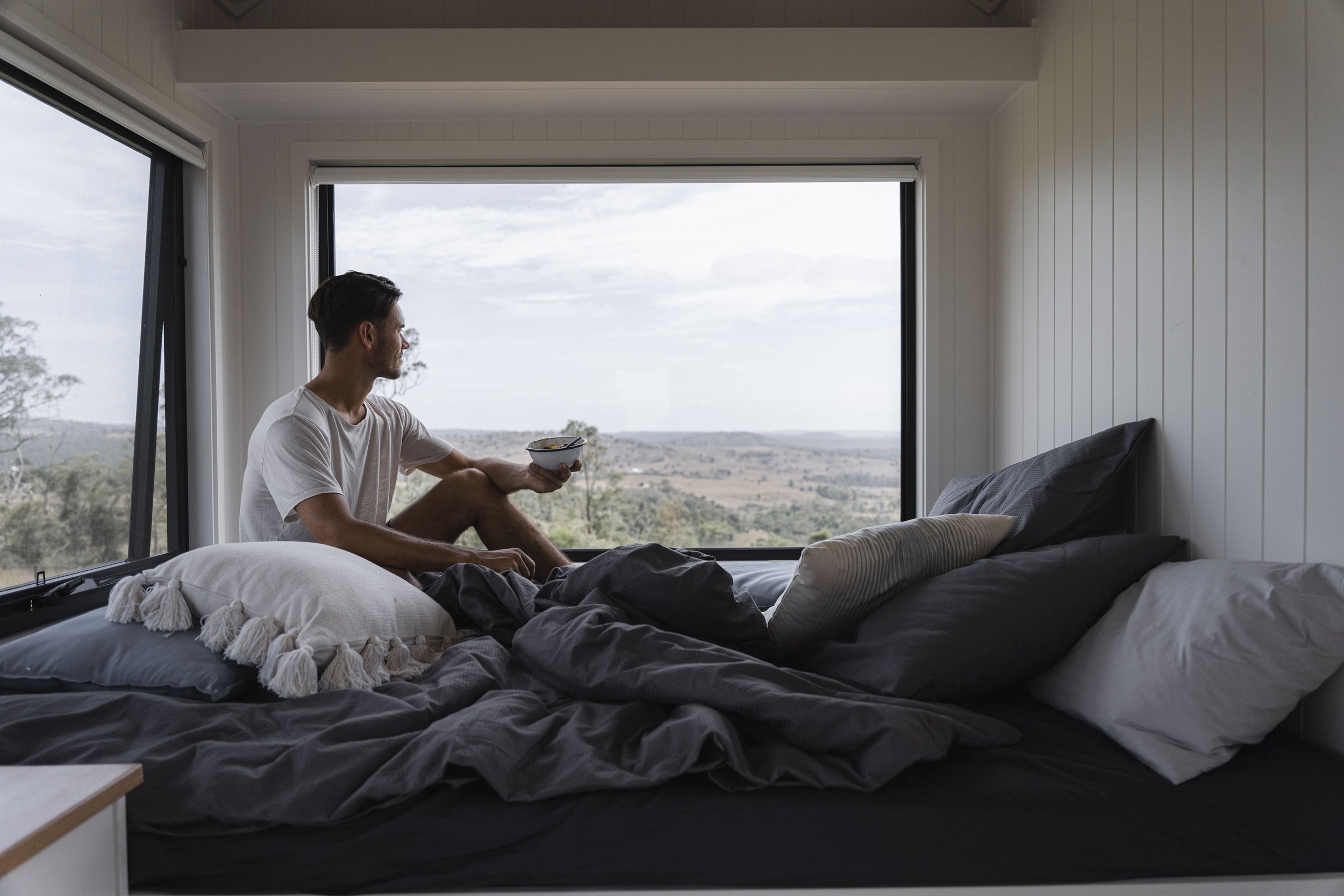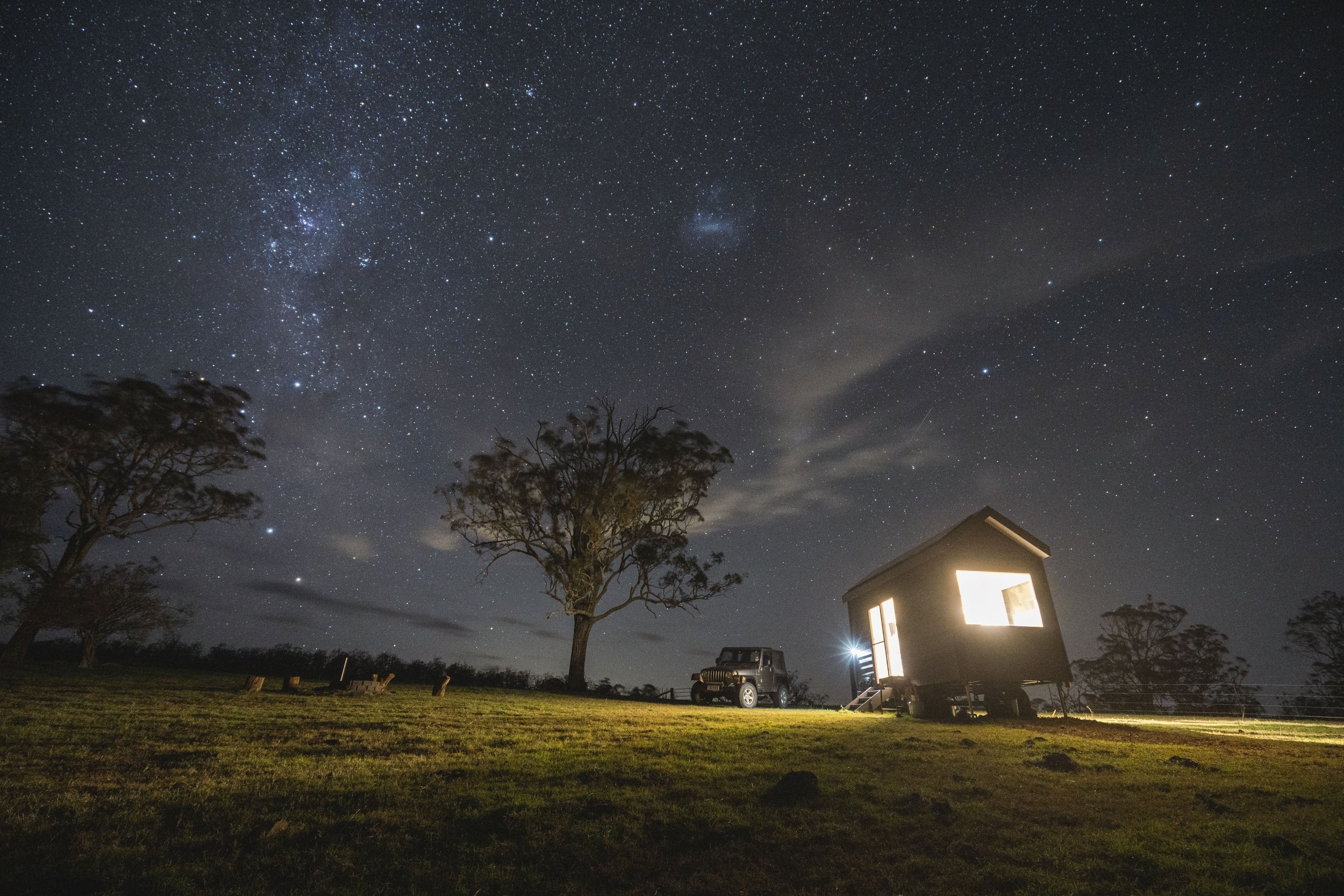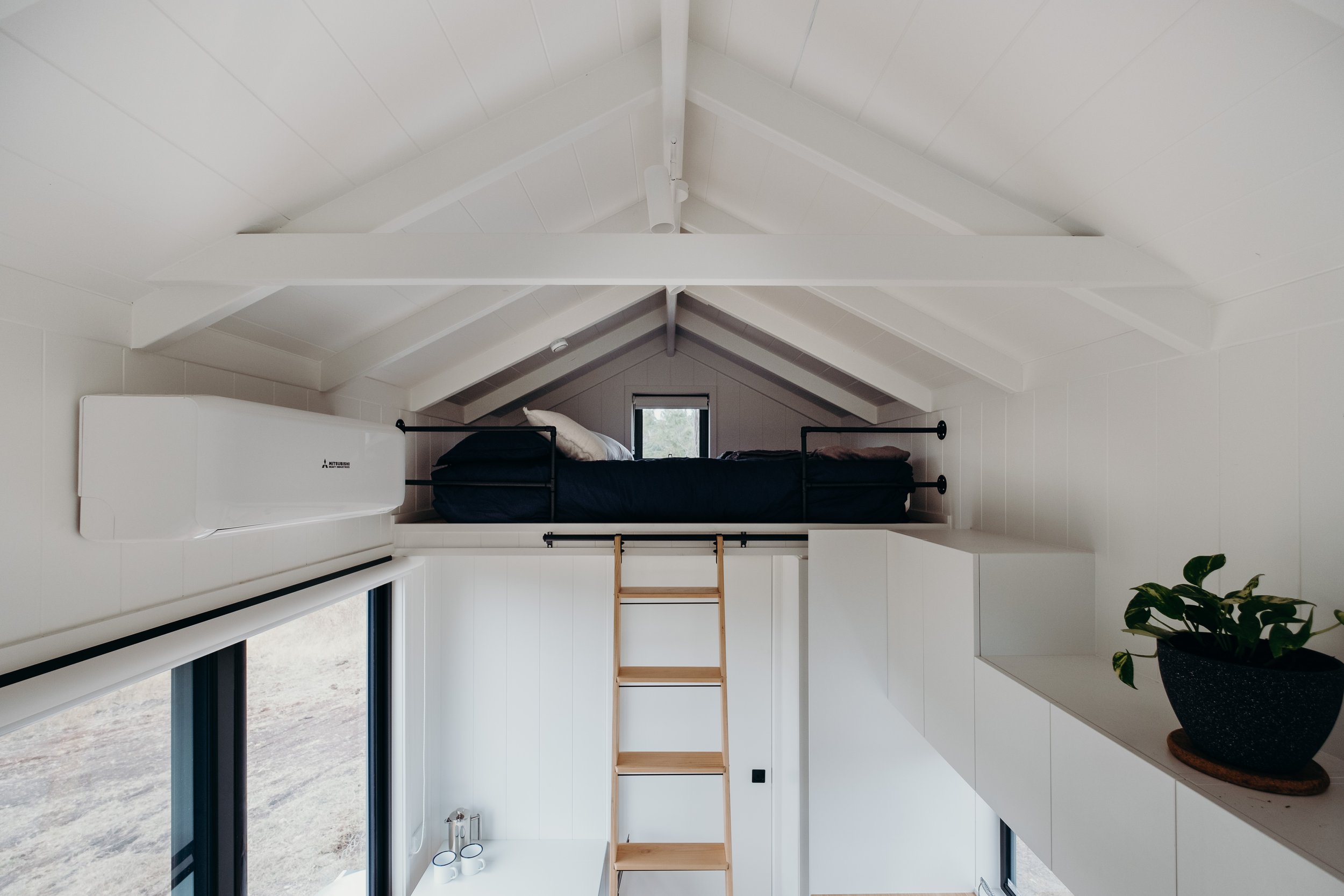The Art of Tiny Living
A quiet dwelling, a humble abode, a serene sanctuary displaced from the turbulence of the world… A tiny home is more than just a house – it’s a lifestyle, retreat, and one that's increasingly growing in popularity and appeal. Written by Nicole Yap.
Updated: 08 May 2025
Written by: Nicole Yap
Photography:
Manuel Fruedmann (above)
Morgan Smith
(below)
There is something alluring about the idea of going off the grid with only the bare necessities and the backdrop of nature.
With 37 square meters (more or less) of floor space, and facilities and furniture strategically stacked, positioned and arranged like pieces of a puzzle, designing and building tiny homes is an art form in itself; the panoramic natural views that wrap around these off-grid tiny homes making one feel as if they are living inside a painting.
The tiny house movement and trend, while not a new one, has seen rising popularity in recent years, making headway during the pandemic, an event that brought the world to a standstill and reminded those of us isolated in our homes that there is life beyond the hustle and bustle of concrete jungles – that a life immersed in nature and simplicity is at our fingertips, if only we seek it.
And with its rising popularity and shift from cultural fringe to mainstream, tiny homes themselves have undergone a serious, and in many cases, lux makeover. Long gone are the spartan, lifeless shells that typified the movement throughout the 80’s and 90’s. Rather, today's tiny homes offer many of the same modern innovations and conveniences that we are used to, without sacrificing on the ideals that, for many, make them so appealing.
Tiny living, then, is less about cramped spaces or a shift from traditional houses, and more about a way of life that is less cluttered, more sustainable, and makes a house (plus a backyard of natural landscapes) into a home.
Toowoomba couple David and Lydia Ferguson decided to build a tiny house due to the high cost of rent, but also to transition into a more minimalist lifestyle.
“[Tiny houses] are an excellent affordable option which goes against the grain of the consumerist Western culture,” Lydia said.
Photography: Morgan Smith @in2thewild.aus
“We are loving the simplicity of tiny house living and are enjoying living more minimalistically. Plus, being in such a small space means cleaning is super quick!”
Similarly, Bryce Doro built a barn-style tiny home due to affordability and the appeal of a simpler, self-sufficient lifestyle. While the timing was not right to continue the project, he hopes to incorporate tiny living into his family’s life.
“I have two young children and I think it would be a good thing to teach them about growing their own food and having respect for their surroundings. A lot of other concepts that tend to go hand-in-hand with tiny house living like recycling, energy efficiency, self-reliance and alternate ways of doing things I believe are going to become more important down the track,” Bryce said.
“We have such an impact on everything around us, so anything that we can do to reduce our footprint and free up some time for family, hobbies or passions is a great thing.”
And that’s what tiny living offers – more time and energy to reconnect with loved ones and the natural world. To swap phone screens for natural scenery, calls and texts for interpersonal connection, luxury for simple joys, and work for rest.
Celeste Giannas, co-founder of Into The Wild Escapes – a company that offers experiences in 46 tiny homes in regional areas across Australia – said tiny living is the perfect way to escape from the pressures of daily life.
“The majority of our guests live in cities where the pace of life is fast – their careers are demanding, often involving high-pressure jobs … Some are also raising children, adding an additional layer of complexity and time constraints. They have little time to switch off and unwind,” Celeste said.
“I believe many individuals are attracted to off-grid living due to their inclination towards minimalism and a desire to simplify their lifestyles. By embracing a simpler way of life, they can prioritise what truly matters to them.
“By immersing ourselves in nature’s wonders, we can experience healing, find inner peace, and rejuvenate our minds and bodies … Life can get hectic, and [it is important to] break free from routines and rediscover the joy of quality time spent with family and nature,” she said.
Photography: Morgan Smith @in2thewild.aus
Sustainability also plays a significant factor in the appeal and increasing importance of tiny homes, as they leave a smaller environmental footprint in comparison to larger conventional houses.
According to Celeste, some sustainable practices implemented in tiny homes are the use of solar panels, rainwater harvesting systems and composting toilets. Tiny homes require fewer construction materials and resources, and the smaller area means reduced water and energy consumption.
“A growing aspiration to lead a more sustainable existence that minimises [people’s] impact on the planet has contributed to the increasing popularity of off-grid living,” Celeste said.
“We [should] strive to develop compassion for the natural world, creating a collective effort to preserve and protect our planet for future generations.”
The tiny house lifestyle is not for the faint of heart, but for the restless soul that longs for something more – not by having more, but by having just what you need. Packing an entire livelihood into a few square meters is no easy feat, yet when lived simply, sustainably and intentionally, tiny living offers an indoor and outdoor adventure full of creativity and discovery.
For those wanting to try out the tiny home life (before committing), you can always book a solo escape, romantic getaway or family holiday at Into the Wild Escapes. The two houses available in the Toowoomba region, named Tiny Norah and Tiny Charlie, are only a 40-minute drive towards Ravensbourne, or pop by the QLD Tiny House Expo at the Toowoomba Showgrounds (May 09-11).
@in2thewild.aus | www.intothewildescapes.com













